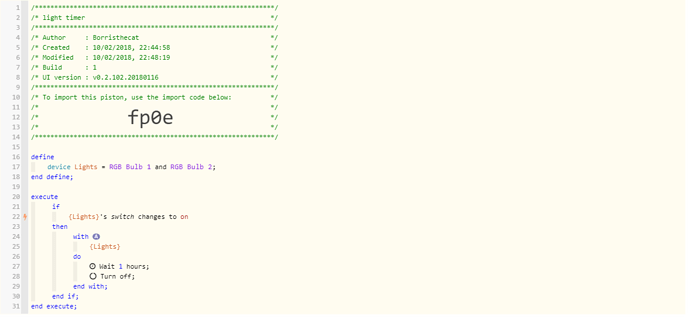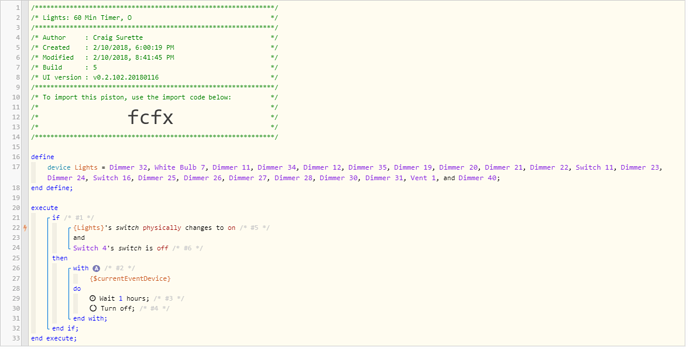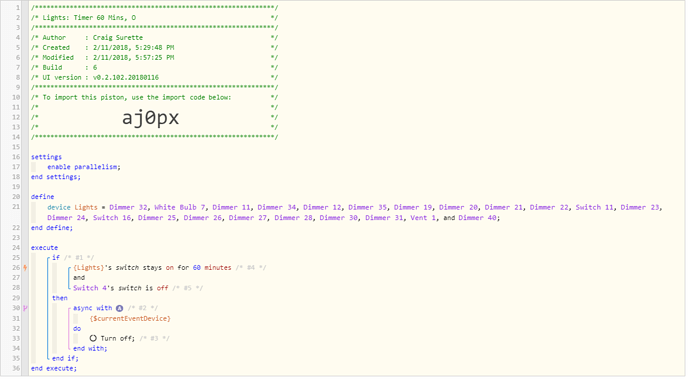Hello. Looking for some design help.
In Core, I built a light timer such that if most lights were turned on (manually), they would turn off after 1 hour. A few key notes.
- I do not yet have motion sensors,
- Most lights come on by piston already so this really covers the others,
- Each light ran it’s own timer…IE If light A was turned on at 6:03pm and light B was turned on at 6:14pm, then at 7:03pm only light A would turn off, while light B would continue to wait until 7:15pm.
In Core, I did this in one piston, but each light was it’s own If on, then in that clause there was the ability to take action, back in the top level of the piston, each light got an ‘OR’ in between.
If Light A (then),
or
If Light B (then).
Feels like with all the great functionality in webcore, we can write this much more streamlined with variables or loops or something. Anybody got any design ideas? One of the last Core automations remaining as I just do not want to rebuild it as 23 pistons in webcore.
Oh, if possible all switches should respect the on/off state of a single additional virtual switch (If Virtual is on cancel timer) - I do not use modes at all, and this would be ‘guests over override switch’ when lighting outside of the norm is expected.




